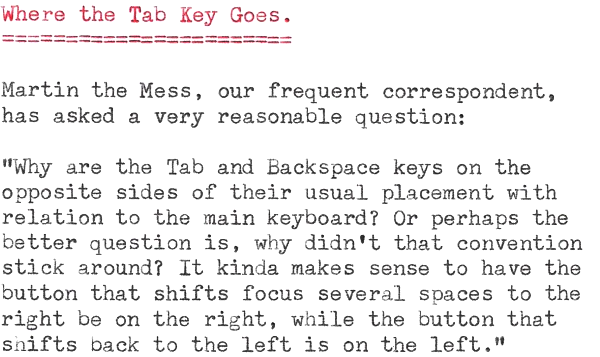Posts filed under “Science & Nature”
FIVE REALLY RISKY FOODS THAT COULD KILL YOU RIGHT NOW.
1. Meats and seafood. Meat-processing plants are havens for listeria, a bacterium that makes its home in meat and reacts violently to home invasions. Seafood is simply meat grown underwater.
2. Dairy products. Salmonella, which is basically murder in bacterial form, can infest milk, cheese, and other dairy products, rendering them unsafe for human consumption. Stay away.
3. Eggs. Eggs can not only be infected with salmonella but can also transmit bird flu, which is especially dangerous for people who eat like a bird.
4. Plant-based foods. Plants are the most frequent carriers of E. coli, which is fatal in four out of five serialized television dramas. Avoid vegetables, fruits, grains, and fungi, which count as plants for the purpose of food-risk awareness.
5. Salt. Salt is collected either from the sea, which is full of pollution and dead fish, or from the ground, which is nothing but pure dirt. Yeah, right, like I’m going to put that in my mouth.
THE BELA LUGOSI OF THE VEGETABLE KINGDOM.
ASK DR. BOLI.
Dear Dr. Boli: My duct tape broke. What should I use to fix it? —Sincerely, A Mad Scientist (or at Least One Who Isn’t Too Pleased About It).
Dear Sir or Madam: You are asking a dangerous question. Duct tape is the universal restorative. To repair the repairing thing is something like dividing by zero. It might have unintended mathematical, philosophical, and even theological consequences. It could lead you into a conundrum from which there is no escaping.
But you might try chewing gum. You’d be surprised how many things chewing gum properly cured can take care of.
ASK DR. BOLI.
PARADOXES OF HUMAN BEHAVIOR.
You just missed it.
Gates’ Paradox: People know that Microsoft Windows will frustrate them, cost hours of lost work time every day, and eventually destroy their data, yet they still choose it as the safe alternative.
The Gasoline Fallacy: Gasoline prices are always posted in figures ending in nine mills, even though, logically, if such a convention were genuinely usfeul in marketing, it would have been adopted for every other product.
The Trolley Conundrum: Even though the streetcars run on a regular and predictable schedule, the answer to the question “When does the next car leave?” is always “Thirty seconds before you get to the stop.”
The Paradox Paradox: Intelligent readers will peruse a list of paradoxical human behaviors on the Internet and nod sagely, and then go back out into the world and continue committing all the same fallacies and absurdities.
Boli’s Disappointment: People know the punch line will not be a sufficient reward to compensate for the effort, yet they still read the joke through to the end.
ASK A MICROSOFT-CERTIFIED WINDOWS TECHNICIAN.
Q. How can I make the taskbar smaller so it doesn’t take up so much room on the screen? I used to be able to do that, but now I can’t find the setting.
A. You can’t. We took that option away.
Q. How can I pin a file to the taskbar, like I used to be able to do?
A. You can’t. We took that option away.
Q. How can I make the clock in the taskbar display the seconds?
A. You can’t. We took that option away.
Q. How can I make searches from the taskbar open in my default browser instead of in Edge?
A. You can’t. We took that option away.
Q. Well, guess what, Microsoft! I found a neat little utility that restores all those capabilities. Now I can do all the things I want to do with my own computer.
A. Thank you for informing us! We just updated your operating system. Now you can’t, and the programmer who created the utility has died in a mysterious accident.
COMMUNITY BULLETIN BOARD.
ASK DR. BOLI.
Dear Dr. Boli: So many of my correspondents add little faces to the end of every sentence that I have to wonder what’s wrong with them. With the correspondents, I mean. I already know what’s wrong with the little faces. First of all, I’m over 35, and my vision, while good, is not perfect, and I can hardly distinguish one emoji from another. Second, even when I put on my reading glasses and magnify my email or text messages, the emojis are seldom more than tenuously connected to the sentences they follow. Nine out of ten of them are variants of a happy face, and the tenth is usually some expression of frustration. But shouldn’t I be able to tell by the words you write whether you’re happy or frustrated? Why the little picture? What information does it add? —Sincerely, E. A. Wallis Budge.
Dear Sir: The emoji does not add information. It is the written equivalent of a nervous chuckle at the end of every sentence. Its message is this: “Please take my unworthy expression in the spirit in which it was intended, and please don’t hurt me even though I’m weak and nervous and would blow away in a stiff breeze.” Now that you know the psychological source of these little faces, you will of course refrain from telling your correspondents, “If you send me one more happy face, I will crawl through the whole series of tubes from one end of the Internet to the other and throttle you.” That would be wrong.
ASK DR. BOLI.
Dear Dr. Boli: Electric engines are much more efficient and deliver much more torque than gasoline engines. Yet, among my acquaintances, the ones who talk the most enthusiastically about powerful cars are the ones most opposed to electric cars and most stuck on internal combustion. Why is that? —Sincerely, An Avid Bicyclist.
Dear Sir or Madam: Because there’s no fuel like an old fuel.












